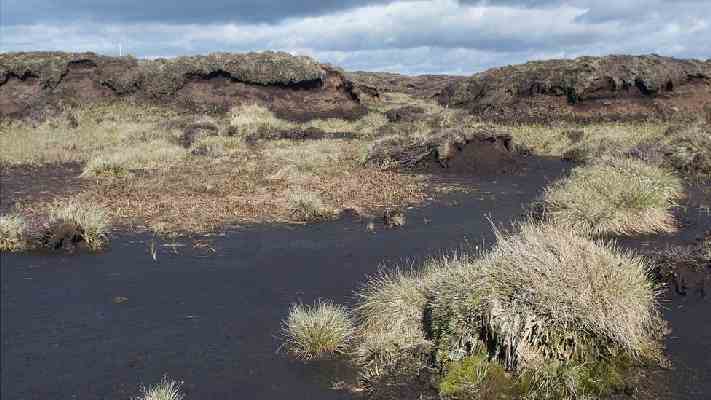Assessing attitudes towards peatland management scenarios in the Fens of East Anglia. (Farming)
Do you live in East Anglia?
Yes
No
How long have you been in the farming industry?
0-5 years
5-10 years
10-15 years
15-20 years
20+ years
Are you aware of what peatland is?
Yes
No
Peatland otherwise known as wetland is a carbon sink formed of partially decayed organic matter (slowed down by water-logged conditions). Overtime this material is compressed and forms a large area of land known as peat, currently covering 3% of global land surfaces.

Peatland otherwise known as wetland is a carbon sink formed of partially decayed organic matter (slowed down by water-logged conditions). Overtime this material is compressed and forms a large area of land known as peat, currently covering 3% of global land surfaces.

Was the land you farm on once peatland or still classed as peatland?
Yes
No
I don't know
Are you aware of the impacts that peatland degradation can have on the environment?
Yes
No
Do you believe that the conservation of peatlands is important for the environment?
Yes
No
Do you hold a strong connection with the landscape that surrounds where you live?
Yes
No
Neither or
Please rank the following in the order of how important they are to you (rank the corresponding letters):
a) Reducing carbon emissions.
b) Improving biodiversity within habitats.
c) Landscape aesthetic.
d) Food security and the agricultural industry.
How strongly do you agree/disagree with the following statement: I would be in favour of restoring peatlands if it meant altering farming practices.
Strongly agree
Somewhat agree
Neither agree nor disagree
Somewhat disagree
Strongly disagree
How strongly do you agree/disagree with the following statement: The removal of peatland will improve the aesthetic of the landscape.
Strongly agree
Somewhat agree
Neither agree nor disagree
Somewhat disagree
Strongly disagree
In order to evaluate various peatland management scenarios we need to understand views of the local community, people involved in the agricultural industry and how they affect environmental organisations. Therefore when choosing the strategies we must consider how they influence people and the environment.
In order to evaluate various peatland management scenarios we need to understand views of the local community, people involved in the agricultural industry and how they affect environmental organisations. Therefore when choosing the strategies we must consider how they influence people and the environment.
Proposed Peatland Management Scenarios:
Restoration Restore heavily degraded areas towards fun
Adaptive Management Improve farming practices on peat soil to slow the loss of soil carbon and encourage conversion of ploughed land to grass conversion e.g. Buffer strips, field corner management etc. Develop and introduce wetland agriculture systems in order to maintain higher water levels within the peat soils. Only use sustainably managed peatlands and develop alternative products where the use of peatland is unsustainable.
Sustainable Management Applying land uses and practices that are compatible with healthy peatlands. Protecting and rehabilitating peatlands, so that they fun
• providing support for land managers who manage peatland sustainably, ensuring the right level of public funding to overcome any market failures.
• avoiding public money being directed into fiscal regimes that can result in peatland damage.
No Intervention Allow the degradation of peatlands and forgo any intervention strategies to conserve or restore peatland areas. This means agricultural practices can continue without taking the deprivation of peatlands into consideration. Requires no surface inundation and water levels can drop to mean depths of 0.5m throughout the year.
Proposed Peatland Management Scenarios:
Restoration Restore heavily degraded areas towards fun
Adaptive Management Improve farming practices on peat soil to slow the loss of soil carbon and encourage conversion of ploughed land to grass conversion e.g. Buffer strips, field corner management etc. Develop and introduce wetland agriculture systems in order to maintain higher water levels within the peat soils. Only use sustainably managed peatlands and develop alternative products where the use of peatland is unsustainable.
Sustainable Management Applying land uses and practices that are compatible with healthy peatlands. Protecting and rehabilitating peatlands, so that they fun
• providing support for land managers who manage peatland sustainably, ensuring the right level of public funding to overcome any market failures.
• avoiding public money being directed into fiscal regimes that can result in peatland damage.
No Intervention Allow the degradation of peatlands and forgo any intervention strategies to conserve or restore peatland areas. This means agricultural practices can continue without taking the deprivation of peatlands into consideration. Requires no surface inundation and water levels can drop to mean depths of 0.5m throughout the year.
Rank the following peatland management strategies in terms of which you would prefer to be implemented most in your local area (type the corresponding letters):
a) Restoration
b) Adaptive Management
c) Sustainable Management
d) No Intervention
{"name":"Assessing attitudes towards peatland management scenarios in the Fens of East Anglia. (Farming)", "url":"https://www.supersurvey.com/QPREVIEW","txt":"Do you live in East Anglia?, How long have you been in the farming industry?, Are you aware of what peatland is?","img":"https://www.supersurvey.com/3012/images/ogquiz.png"}
More Surveys
4 South Unit Based Council
5233
Research is on Accounting practices in SMEs ( Responses will be considered confidential and will be used only for the research)
19100
Electric Scooter Rental (like Lime) in Beirut
7420
Work-life balance
12641
Nominate Your Supervisor
7419
Women In Golf
12625
Is Brady The G.O.A.T
100
AQ40 GDKPS
3239